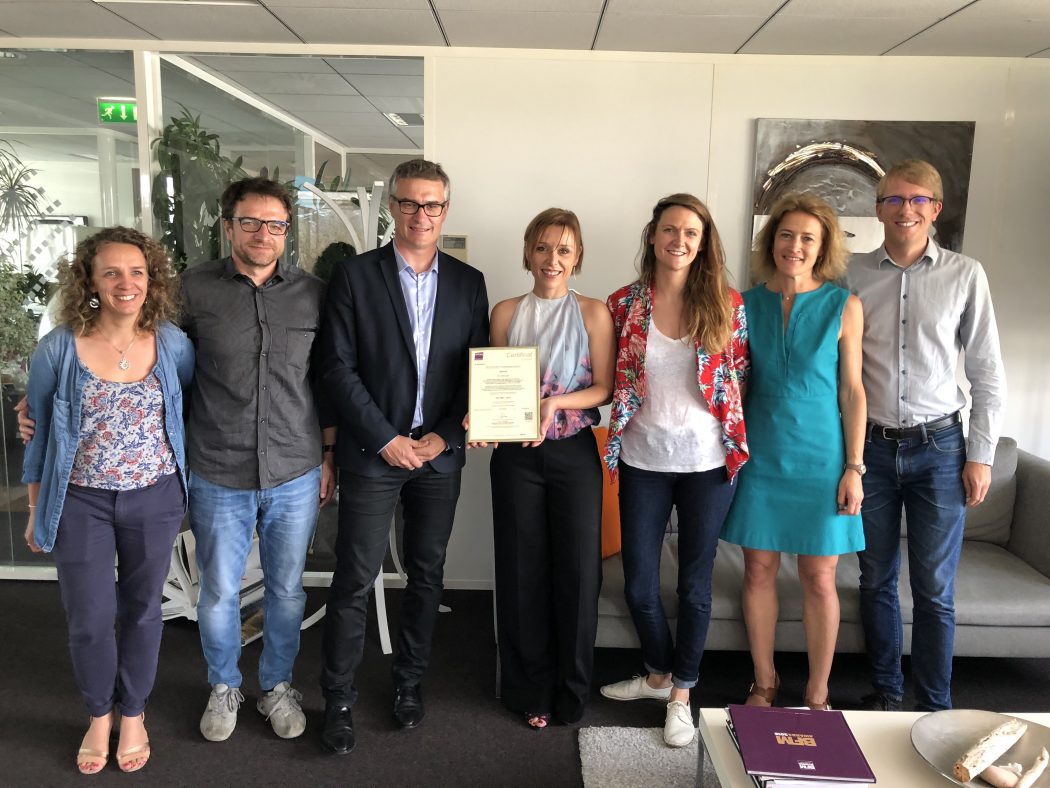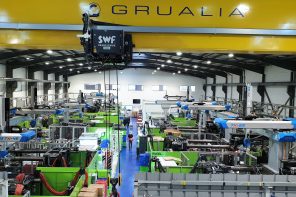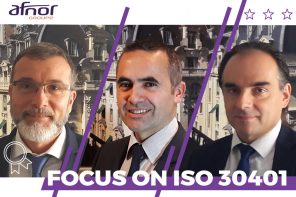In April 2019 this flourishing French digital business obtained AFAQ ISO 9001 certification. Franck Siegel and Florence Deuchst, respectively the company’s CEO and Quality Manager, explain how this prized award will open new doors for them.
Why did you choose ISO 9001 as your first certification?
Franck Siegel: Because a mark of quality that means something to everybody at an international level was becoming imperative for our continued growth as an Internet of Things (IoT) telecoms operator. Formed in 2009 at Labège in the suburbs of Toulouse, Sigfox now has 450 employees. In the last two years, the reach of our low data rate network has doubled from 30 to 60 countries. At the end of 2018, the 6.2 million connected objects compatible with our technology exchanged over 13 million very small messages daily (12-bit or less and no more than 140 times a day). A 300% increase compared with 2017!
We want to bolster our position as world leader in this market segment while continuing our transformation into a service organization. Over the next few years Sigfox will expand its network across the globe, notably in Russia, China and India, with the goal of connecting a billion objects by 2023. Satellite coverage will be added to the terrestrial antennas deployed today so as to cover the entire planet, including dense or hard-to-access areas. This is useful for certain unexpected applications such as locating herds of cows fitted with connected collars in rural areas! Our first satellite will be launched before the end of 2019, in partnership with Eutelsat.
What did you expect from the certification?
Franck Siegel: In ten years the company has developed and has become a major league player like Google, Amazon and Apple. We needed an objective mark of recognition that this breakthrough was achieved in the framework of commitment to quality. The certification meets the expectations of our investors who have supported us to the tune of over 300 million euros via a number of fund raising campaigns. It also demonstrates that Sigfox has reached a level of industrialization enabling it to meet the requirements of major purchasers such as Bosch, Michelin, Airbus and DHL.
Florence Deuchst: We also wanted to show that a quality approach was compatible with a culture of innovation. The certification requirements weren’t restrictive, in fact quite the contrary. When used correctly, they encourage the emergence of new ideas while responding to user needs and expectations. Ranked fourth in terms of patents in 2018, Sigfox has established itself as one of the most innovative companies in France!
How did your employees adjust to the certification process?
Franck Siegel: ISO 9001 certification is the end reward for two years of planning and hard work. The workforce joined together in what may be described as a “genuine team effort”.
Florence Deuchst: Our company is made up of people with very different professional backgrounds. Some of them come from startups and others from large groups. We did not impose any top-down policy, we started from an operational perspective, the work we do on the ground, building on our collective knowledge and experience: what are we doing today? What does the standard require of us? How do we meet this requirement? The people who were opposed at the start became aware that their work was close to the ISO 9001 requirements. In short, they were achieving quality without even knowing it!
How has the certification approach changed the company’s internal organization?
Franck Siegel: In a business that grows so fast, silo mentalities, barriers between departments can emerge and these have to be broken down as quickly as possible. The certification enabled us to structure the teams and bring everyone together around a common goal. And this is how the process approach enabled us to strengthen one of our priorities: putting the customer at the core of our concerns. Whilst the approach was being put in place, all individuals, irrespective of their position in the value chain, recognized their contribution to this customer satisfaction.
Florence Deuchst: The auditor appointed by AFNOR Certification, Thierry Jagu (see the info box below) took the time to properly appreciate the specific features of Sigfox: our history and strategy, the startup spirit, and so on. He understood our need to link strategic and business issues. His scrutiny helped us develop our implementation of the process approach. He also gave us advice for our future monitoring audits. Not only was the standard not restrictive, it brought us opportunities for improvement and for future consideration.
Do you have any other certification projects underway?
Franck Siegel: With ISO 9001 it was important to demonstrate that our quality system was compliant and consistent. This first experience has motivated us to measure ourselves against standard ISO 27001 on information security management, a major concern among our customers. The AFAQ ISO 27001 certification process should be completed in 2022.
Florence Deuchst: Another central focus of our approach: preservation of the environment and corporate social responsibility (CSR). Our technology is low-energy consuming and we want to make this known. The connected objects using our network ideally have a one percent duty cycle and so their battery only needs to be replaced every ten years on average. We will almost certainly choose ISO 14001 but others are also possible. We will select the most appropriate framework for structuring our environmental initiatives of which there are already many.
The viewpoint of Thierry Jagu, auditor for AFNOR Certification
“For five or six years, Sigfox operated in startup mode. As it grew, the company had to develop a more structured approach. An operations manager and a quality manager were recruited in order to deploy the strategy in an operational way in the enterprise, an element required by ISO 9001 version 2015. This led to the regular organizing of one- or two-day seminars focusing on strategy with level 1 and 2 employees. Another innovation by this client: the Project Management Office, an approach involving the use of identical project management tools regardless of the kind of project. This organizational system encourages decision making, cross-functional integration, steering and optimization of resources over the entire enterprise, deploying a matrix organizational structure. But, by focusing on these cross-functional tools, the enterprise puts less emphasis on business area expertise, marketing, research studies, etc. An aspect that should be taken into consideration more fully for the next audit.”





